GrabCAD

NASA RASSOR Bucket Drum
by GrabCAD
Last crawled date: 1 year, 11 months ago
Scale Model Testing revealed modifications to the internal baffling were necessary. The model has been updated with refined baffling. This design is the most efficient possible while maintaining functionality in any situation. It is exceedingly lightweight, robust, and based on tried and true technology.
The extensive internal baffling maintains above a 50% fill ratio (20 Liters) regardless of terrain variation and duration of transport. This was demonstrated in scale testing.
The cutting edge utilizes excavator bucket teeth we have used for well over one hundred years. The scoop leading edges are angled to deflect larger rocks away from the bucket and rover path to prevent damaging any aspect of the rover or getting the rover stuck.
Titanium and Carbon fiber construction is exceedingly abrasion resistant, strong, and lightweight.
This design is just within all maximum design dimensions and above volume requirements.
Mass: 2.995 kg
Fill Ratio: Above 50%
(Likely above 60%, unable to verify with current resources)
Volume of Regolith: Above 20 Liters
This design will indeed work, as demonstrated in scale tests. Every aspect of this design has been thoroughly scrutinized for functionality and refined multiple times. The opening for the bucket is smaller than the path through the baffling. Anything that can make it in can certainly make it back out. Each scoop has its own internal chamber to maximize fill speed and minimize regolith loss during transport.
This design was created with the intention of 3d printing the bucket from carbon fiber infused nylon with dissolvable supports, but It can also be constructed traditionally from carbon fiber fabric. The bucket teeth and leading edge can be 3d printed or machined from titanium or steel and attached with industrial adhesive, riveted, or crimped to the bucket. The bucket is thin enough not waste crucial mass while maintaining more than enough strength for interplanetary mining operations in lower gravity environments.
Youtube Video available Below.
The extensive internal baffling maintains above a 50% fill ratio (20 Liters) regardless of terrain variation and duration of transport. This was demonstrated in scale testing.
The cutting edge utilizes excavator bucket teeth we have used for well over one hundred years. The scoop leading edges are angled to deflect larger rocks away from the bucket and rover path to prevent damaging any aspect of the rover or getting the rover stuck.
Titanium and Carbon fiber construction is exceedingly abrasion resistant, strong, and lightweight.
This design is just within all maximum design dimensions and above volume requirements.
Mass: 2.995 kg
Fill Ratio: Above 50%
(Likely above 60%, unable to verify with current resources)
Volume of Regolith: Above 20 Liters
This design will indeed work, as demonstrated in scale tests. Every aspect of this design has been thoroughly scrutinized for functionality and refined multiple times. The opening for the bucket is smaller than the path through the baffling. Anything that can make it in can certainly make it back out. Each scoop has its own internal chamber to maximize fill speed and minimize regolith loss during transport.
This design was created with the intention of 3d printing the bucket from carbon fiber infused nylon with dissolvable supports, but It can also be constructed traditionally from carbon fiber fabric. The bucket teeth and leading edge can be 3d printed or machined from titanium or steel and attached with industrial adhesive, riveted, or crimped to the bucket. The bucket is thin enough not waste crucial mass while maintaining more than enough strength for interplanetary mining operations in lower gravity environments.
Youtube Video available Below.
Similar models
grabcad
free

NASA (RASSOR) Bucket Drum Design Challenge with Design VPR 21
...ely for blades and bucket
7. inside section view while filling bucket
8. section view of one from 16 modified 623zz ball bearings
grabcad
free

93% Fill Bucket Drum
...achieve the desired 17.6 liter capacity. this bucket drum design can be scaled to fit other robotic regolith collecting vehicles.
grabcad
free

RASSOR bucket
... closing caps bolted to either sides of the bucket drum and the titanium baffles being welded to the interior of the bucket drum.
grabcad
free

NASA RASSOR Spiral Drum
...erial: ti 6al 4v
mass: 2.6 kg
drum length: 348mm
drum diameter: 450mm
engaged scoop width: 172mm
max captured regolith: 33 liters
grabcad
free

NASA RASSOR Challenge Entry
...that could approximate the fill. a jpeg of the dimensions of this estimation is attached as well as the mathematical calculation.
grabcad
free

NASA's RASSOR 3.0 Bucket Drum
...ience accomplishing this challenge.
thank you all for visiting! :)
grabcad
free

RASSOR Bucket Drum Design
...0 mm
volume of regolith captured: approximately 19 liters
fill ratio: approximately 70%
materials:
cfrp
5052-h38 aluminium alloy
grabcad
free

Excavator
...ed: 30.88 liters
fill ratio: 80%
the fill ratio of the barrel is estimated, i believe that it should be at least 80% fill ratio.
grabcad
free

RASSOR Bucket Design
...n blade 375mm
drum diameter: 325mm
total mass: 4.41 kg
volume of the drum: 24.55 l
materials: carbon fiber, abs plastic, titanium
grabcad
free

NASA RASSOR Bucket Drum
...enario.
i think this design would work and would not be complicated to fabricate, as the shapes and structures are kept simple.
Rassor
grabcad
free

RASSOR
...rassor
grabcad
just tried to design rassor
hope you like it :)
grabcad
free

Rassor
...s effesien used for mining in outer space, the system used is the mortar mixing system. this drum rassor uses horizontal rotation
grabcad
free

Rassor
...rassor
grabcad
modeling of rassor drums for the collection of extraterrestrial soil. rhinoceros, file stl and renderings
grabcad
free

Rassor Bucket
...rassor bucket
grabcad
nasa rassor challenge
grabcad
free

RASSOR
... (rassor) with major highlight is the excavation blade is a angle of 30 degree. the software used in particle simulation is edem
grabcad
free

RASSOR
...rassor
grabcad
this is a very simple and innovative plan
grabcad
free

RASSOR Regolith Miner
...rassor regolith miner
grabcad
designed for the nasa rassor bucket challenge
grabcad
free

rassor de Alonso
...rassor de alonso
grabcad
eta es una pala para el sistema rassor
grabcad
free

RASSOR Scoop Drum
...rassor scoop drum
grabcad
stl / jpeg / txt file submission for nasa rassor scoop challenge
grabcad
free

NASA RASSOR BUCKET
... is a design for nasa rassor bucket. the total weight of the bucket is 4.94 kg. for unloading rotate the bucket counterclockwise.
Nasa
turbosquid
$49

Nasa Marscopter
...id
royalty free 3d model nasa marscopter for download as max on turbosquid: 3d models for games, architecture, videos. (1323349)
turbosquid
$500
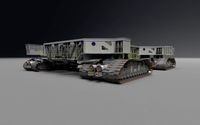
NASA Crawler
... available on turbo squid, the world's leading provider of digital 3d models for visualization, films, television, and games.
turbosquid
$5

Nasa Rocket
... available on turbo squid, the world's leading provider of digital 3d models for visualization, films, television, and games.
turbosquid
$1

NASA Spool.max
... available on turbo squid, the world's leading provider of digital 3d models for visualization, films, television, and games.
3d_export
$15

US NASA 3D Model
...us nasa 3d model
3dexport
spaceship ship nasa battle blender
us nasa 3d model antonielfelain 96625 3dexport
turbosquid
$99

NASA MIT Wing
...oyalty free 3d model nasa mit wing for download as ma and max on turbosquid: 3d models for games, architecture, videos. (1510099)
turbosquid
$29
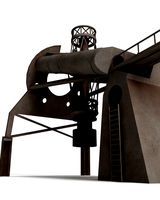
NASA Electronic Telescope
... available on turbo squid, the world's leading provider of digital 3d models for visualization, films, television, and games.
turbosquid
$6

Real flag NASA
... available on turbo squid, the world's leading provider of digital 3d models for visualization, films, television, and games.
3d_export
$41
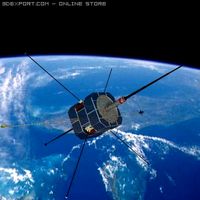
NASA FAST Satellite 3D Model
...odel
3dexport
nasa space satellite earth aurora sensor panel solar orbit
nasa fast satellite 3d model visualmotion 20244 3dexport
3d_export
$20

22k photorealistic earth - nasa
...tures directly from nasa.<br>nasa solar system bundle coming soon!<br>contact info@teichmanmedia.eu for all iquiries.
Bucket
archibase_planet
free

Bucket
...bucket
archibase planet
pail bucket tub
bucket - 3d model for interior 3d visualization.
3d_ocean
$5

Bucket
...bucket
3docean
bucket cleaning galvanized gavanised stainless steel zinc zinc coated
a galvanized bucket
turbosquid
free
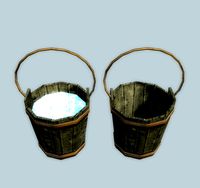
Bucket bucket With Water
... available on turbo squid, the world's leading provider of digital 3d models for visualization, films, television, and games.
archibase_planet
free

Bucket
...bucket
archibase planet
bucket pail
bucket n250308 - 3d model (*.gsm+*.3ds) for interior 3d visualization.
archibase_planet
free

Bucket
...bucket
archibase planet
tub bucket pail
bucket - 3d model (*.gsm+*.3ds) for interior 3d visualization.
archibase_planet
free

Bucket
...bucket
archibase planet
bucket pail bin
bucket n280612 - 3d model (*.gsm+*.3ds) for interior 3d visualization.
archibase_planet
free

Bucket
...bucket
archibase planet
pail bucket tub
bucket 2 - 3d model (*.gsm+*.3ds) for interior 3d visualization.
archibase_planet
free

Bucket
...bucket
archibase planet
fire fighting equipment dip-bucket
bucket - 3d model (*.gsm+*.3ds) for interior 3d visualization.
3d_export
$5

bucket
...bucket
3dexport
scratched galvanized bucket. fbx, obj, blend, and testura formats
3ddd
$1
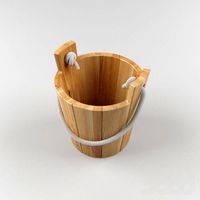
Wooden bucket
...wooden bucket
3ddd
wooden bucket , ведро
wooden bucket
Drum
3d_export
$5

drums
...drums
3dexport
drums
3d_ocean
$20

Drums
...iled model of drums. charleston,bass drum, tamtam drums, cymbal,etc. available in .blend, .obj, and .lwo format. ready for render
archibase_planet
free

Drum
...hibase planet
drum musical instrument tambour drum kit
drum taiko n091115 - 3d model (*.gsm+*.3ds) for interior 3d visualization.
design_connected
$9

Drum
...drum
designconnected
brent comber drum computer generated 3d model. designed by comber, brent.
turbosquid
$4

Drum 7 Drum 12
... model drum 7 drum 12 for download as max, max, fbx, and obj on turbosquid: 3d models for games, architecture, videos. (1641795)
3d_export
$15

Conga Drum
...conga drum
3dexport
conga drums
3d_export
$10

electro drums
...electro drums
3dexport
electro drums
3d_export
$5

electric drums
...electric drums
3dexport
electric drums
turbosquid
$1

Drums
...s
turbosquid
royalty free 3d model drums for download as max on turbosquid: 3d models for games, architecture, videos. (1240112)
turbosquid
$1

Drum
...turbosquid
royalty free 3d model drum for download as blend on turbosquid: 3d models for games, architecture, videos. (1480093)
